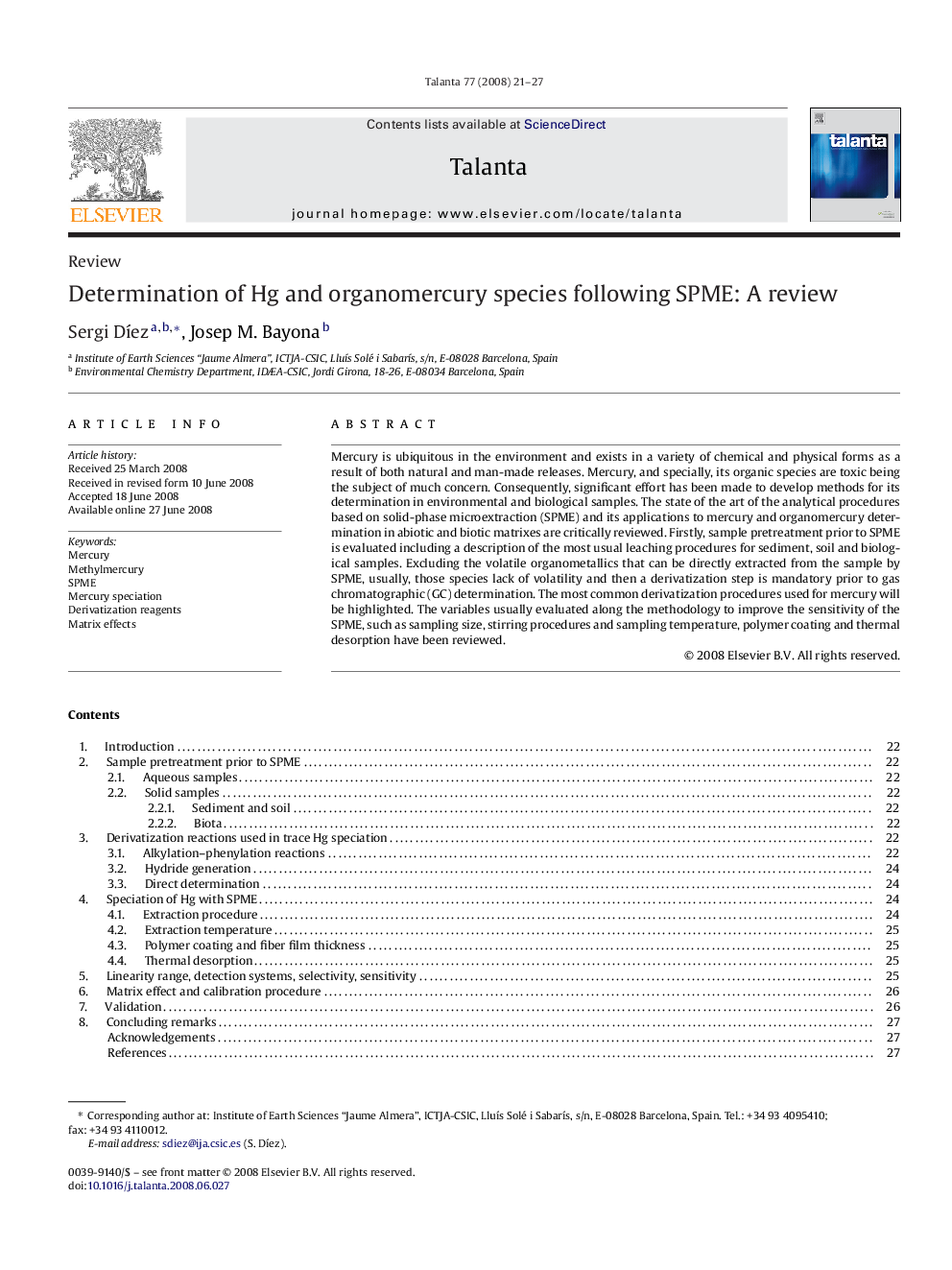| Article ID | Journal | Published Year | Pages | File Type |
|---|---|---|---|---|
| 1245264 | Talanta | 2008 | 7 Pages |
Mercury is ubiquitous in the environment and exists in a variety of chemical and physical forms as a result of both natural and man-made releases. Mercury, and specially, its organic species are toxic being the subject of much concern. Consequently, significant effort has been made to develop methods for its determination in environmental and biological samples. The state of the art of the analytical procedures based on solid-phase microextraction (SPME) and its applications to mercury and organomercury determination in abiotic and biotic matrixes are critically reviewed. Firstly, sample pretreatment prior to SPME is evaluated including a description of the most usual leaching procedures for sediment, soil and biological samples. Excluding the volatile organometallics that can be directly extracted from the sample by SPME, usually, those species lack of volatility and then a derivatization step is mandatory prior to gas chromatographic (GC) determination. The most common derivatization procedures used for mercury will be highlighted. The variables usually evaluated along the methodology to improve the sensitivity of the SPME, such as sampling size, stirring procedures and sampling temperature, polymer coating and thermal desorption have been reviewed.
